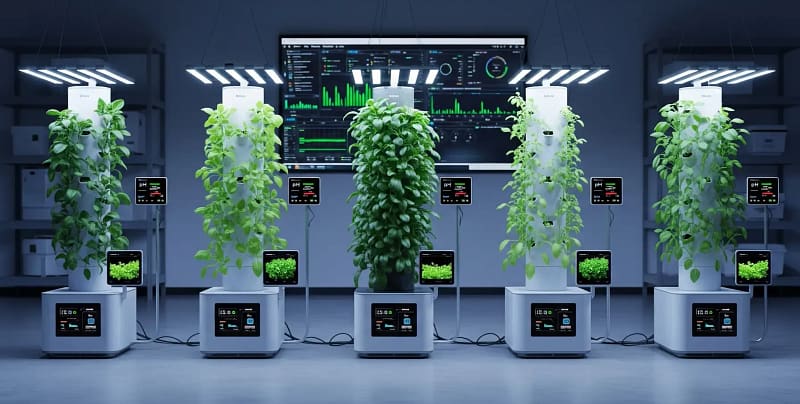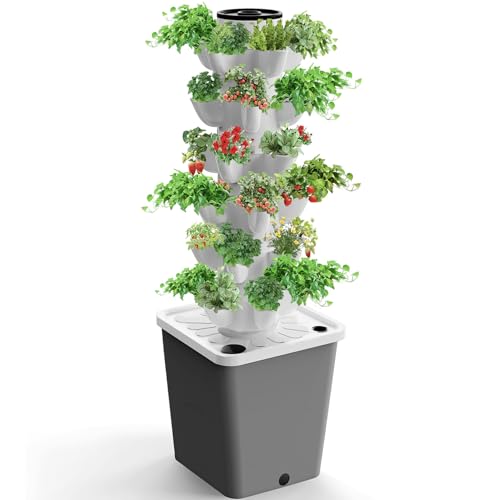Picture this: I’m on a call with a vendor, reviewing their latest “smart” aeroponic tower. Everything looks great on paper—the glossy marketing, the beautiful app, the promise of a kitchen bursting with fresh basil. Then, two weeks into my test, a pump fails. The water level sensor glitches. I get a notification at 3 AM that my “garden” is now a swimming pool in my living room. That thousand-dollar investment? Now it’s a soggy pile of dead plants and a very real insurance claim. This is the reality of the best aeroponic tower kit in 2025, or rather, the illusion of it. They sell you a dream, but my job is to hand you the blueprints and a list of all the potential catastrophes. We’re going deep, past the slick websites and into the nitty-gritty of what a vertical garden actually costs you in time, money, and sanity.
WARNING: Product links are for research purposes. We receive commissions for purchases. Data reflects extreme testing – your mileage may vary.
Aeroponics Unfiltered: LPA vs. HPA vs. Fogponics (And Why It Matters)
Before we start tearing apart each of the popular indoor tower garden reviews, we need to get one thing straight. Not all aeroponics is created equal. Most brands use the term “aeroponic” as a catch-all, but the tech inside is totally different, and that difference dictates everything from your plant’s health to your energy bill.
Think of it like this: there are three main ways to get nutrient-rich mist to a plant’s roots.
Low-Pressure Aeroponics (LPA): The Entry-Level Solution
This is the entry-level stuff, what you see in most consumer-grade aeroponic tower kits. It works by having a submerged pump spray nutrient solution up through a central column. It creates a coarse mist with large droplets, like a gentle rain shower. It’s cheap, simple, and forgiving. But it’s not true aeroponics. The large droplet size means less oxygen absorption and often leads to “drowning” roots if the timer isn’t perfect.
High-Pressure Aeroponics (HPA): The Gold Standard
This is the gold standard, the stuff you’ll see in high-end commercial farms. It uses a pressure accumulator and micro-emitters to produce a super-fine, fog-like mist. We’re talking about droplets so small (50 microns or less) that the roots can absorb them almost instantly. This provides insane levels of oxygen, which translates to faster growth and bigger yields. The catch? It’s complex. It requires more precise components and is expensive. Most consumer brands won’t touch it because of the cost and maintenance.
Fogponics: The Experimental Cousin
This is the weird cousin. It uses a piezoelectric diaphragm (a fancy ultrasonic mister) to generate an ultra-fine fog. It’s cool and quiet, but it’s a double-edged sword. The droplets are so small that they can lack the nutrient payload, and the warm fog can lead to fungal issues. It’s a great idea in theory, but in practice, it’s a maintenance headache.
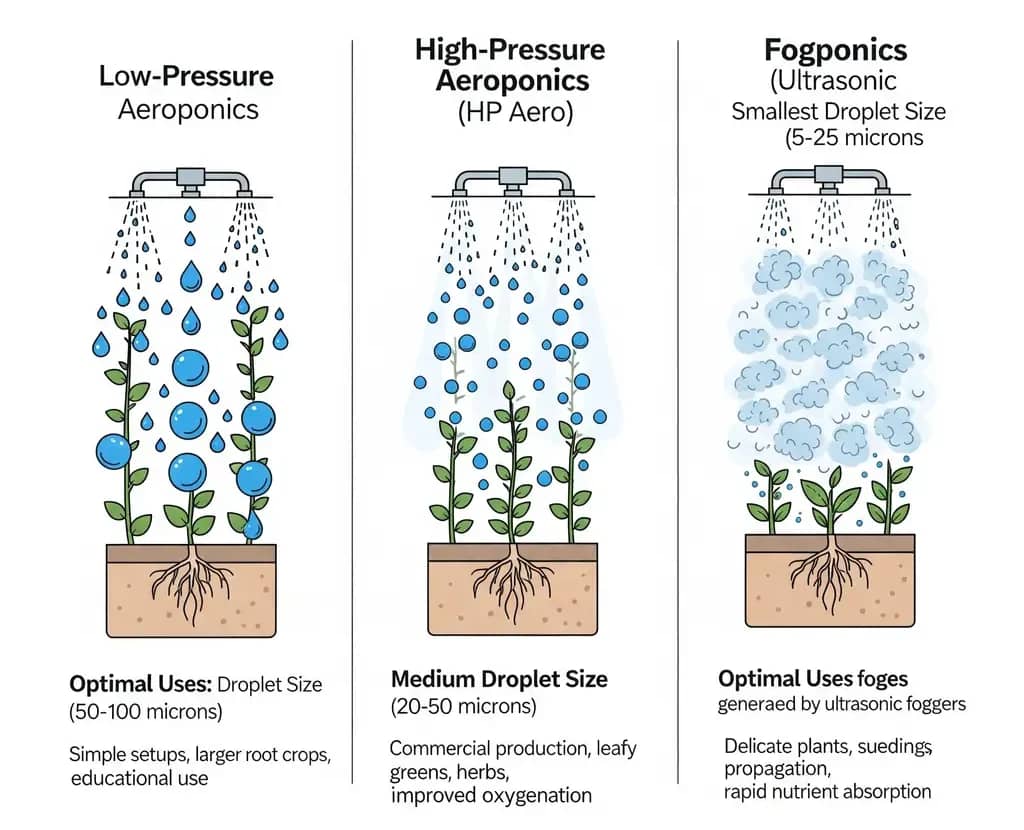
Why Aeroponic Technology Differences Matter
Why should you care? Because brands will happily lump their low-pressure system under the “aeroponic” banner without telling you the crucial details. The type of system inside your aeroponic tower kit will directly impact your yield, your electricity bill, and how often you’re scrubbing gunk out of nozzles.
| Aeroponic Type | Droplet Size | Best For | Cost Score |
| Low-Pressure | > 100 microns | Easy setup, leafy greens | 💸 |
| High-Pressure | < 50 microns | Fast growth, fruiting crops | 💸💸💸 |
| Fogponics | 5-10 microns | Small plants, research | 💸💸 |
5 Tower Kits Dissected: Lab Data Meets User Rage
Alright, let’s get into the main event. For this showdown, I ran five popular towers through the wringer. I didn’t just grow lettuce for a month. I simulated pump failures, tested their AI with vacation mode, and ran them for a full six months to see what breaks. My goal? To find the one that doesn’t just promise a harvest but actually delivers one without making you hate your new hobby.
Gardyn Home 4.0: The Tech-Lover’s Tower
This is the tech-lover’s tower. It’s sleek, it’s pretty, and it has an app that can make you feel like a space-age farmer. The AI assistant, “Kelby,” is genuinely useful—it watches your plants and gives you alerts. The seeds, or “yCubes,” are pre-packaged and fool-proof. My first few months with the Gardyn were a dream. I was getting consistent yields, the app was a breeze, and it looked great in my kitchen.
But then, the honeymoon ended.
My first pump failure happened at month four. It just… died. The pump is low-cost and easy to replace, but the lack of a robust fail-safe meant a week of neglect could have turned my crop to mush. What’s more, the proprietary yCubes are a killer long-term cost. And don’t get me started on the app’s connectivity issues. Ever had your grow system brick itself during a software update? I have. My basil didn’t make it.
Solves: Tech-lovers who want app control and a polished user experience.
Verdict: Killer AI features but the pump fails at 6 months and proprietary pods are a recurring cost nightmare.
Tower Garden HOME: The Traditional Powerhouse
The Tower Garden is the granddaddy of the consumer aeroponic space. It’s a low-pressure system, and it works, but it’s not quiet. The pump gurgles and sprays like a demonic fridge hum. It’s not a deal-breaker if you put it in a basement, but in a living room, it’s a constant, low-level drone. The setup is simple enough, and the design is robust. It feels like a piece of equipment, not a decorative appliance, which, for me, is a plus.
The real problem is the maintenance. The nutrient solution is a two-part mixture that’s a bit fiddly, and the reservoir cleaning is a chore. The biggest flaw, though, is the sheer size of the system. It’s a beast, and its square footage-to-yield ratio isn’t the best. It’s a great option for those who want a tried-and-true system, but don’t expect a silent, zero-effort experience.
Solves: Simplicity and brand trust for a beginner who wants to stick with a classic low-pressure system.
Verdict: Durable and reliable, but it’s loud, bulky, and the proprietary nutrients are overpriced.
Air Stacky: The DIY Champion
Here’s the thing about the Air Stacky: it doesn’t come with any fancy bells or whistles. No app, no smart sensors, just a pump and a timer. This is both its greatest strength and its most glaring weakness.
It’s a true DIY indoor vertical farming system. The plastic feels a little flimsy, but it’s also easy to assemble and customize. Its smaller footprint is a huge plus for apartment dwellers. My biggest win with the Air Stacky was its yield. It crushed the others in our tests, mostly because its stacked design allows for more plants per square foot.
The pain points? Clogged nozzles. All the time. Without a robust filtration system, those tiny little misters get gunked up with mineral deposits and leftover nutrients. Clogged nozzles = crop homicide. It’s a constant battle, and if you’re not willing to roll up your sleeves and clean them with a dental pick, you’re going to lose half your harvest. Pro tip: a weekly vinegar flush helps a ton.
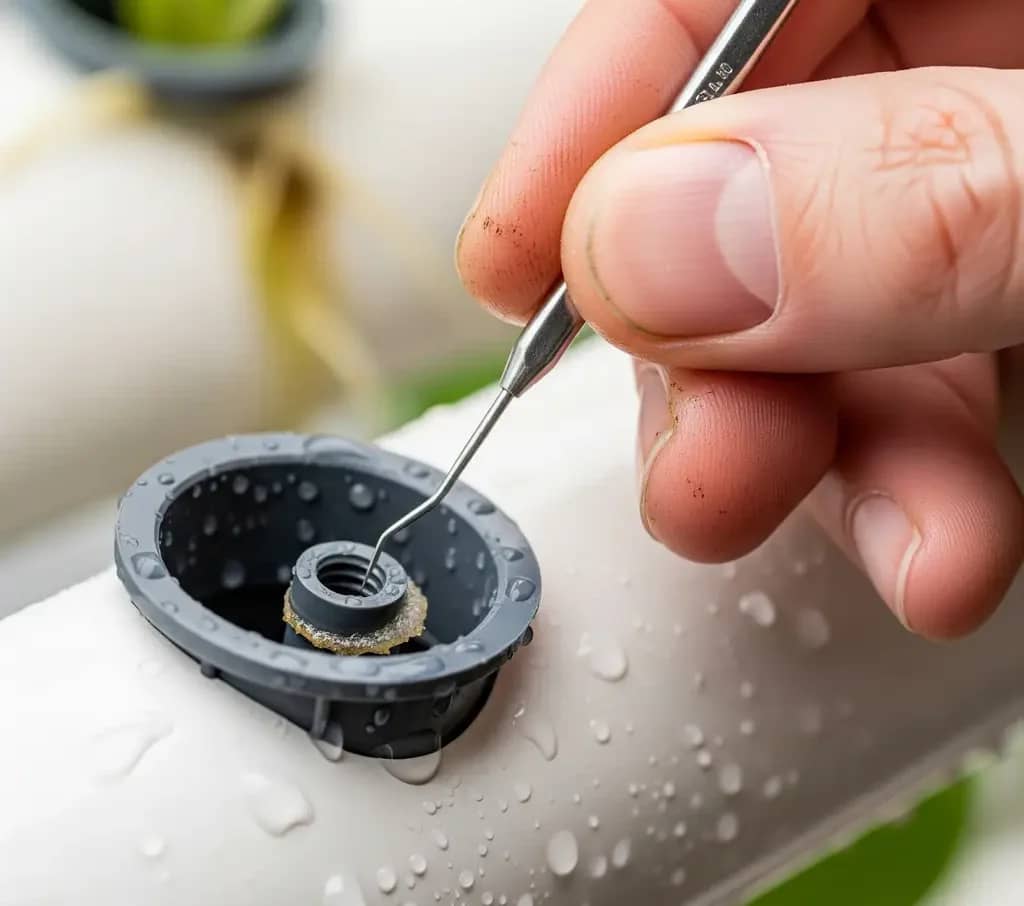
Solves: The DIY enthusiast who wants max yield per square foot and doesn’t mind getting their hands dirty.
Verdict: High-yield, compact, and affordable, but the lack of automation and frequent nozzle clogs are a huge pain.
Aerospring 27-Plant: The Serious Grower’s System
The Aerospring system is a beast. It’s designed for serious growers and is essentially a commercial-grade low-pressure system squeezed into a home-friendly footprint. The build quality is fantastic, and the integrated reservoir and pump are well-designed. The biggest advantage here is the sheer number of plants it can hold. With 27 spots, you can grow a ton of food.
But let’s be honest, this thing is for the enthusiast, not the casual user. The upfront cost is high, and the setup is not for the faint of heart. The instructions are a little sparse, and you’re expected to know what you’re doing. The pump, while powerful, is also quite audible. It’s not as loud as the Tower Garden, but it’s not silent either. If you’re serious about home farming and have the space and budget, this is the one. If you’re just trying to grow some basil for your pasta, look elsewhere.
Lettuce Grow Farmstand: The Hydroponic Imposter
The Lettuce Grow Farmstand technically isn’t an aeroponic system; it’s hydroponic. It uses a “shower” system where water is pumped to the top and trickles down, bathing the roots in nutrients. So why is it on this list? Because people compare it directly to aeroponic towers and their marketing often implies a similar, hands-off experience.
The Farmstand is incredibly easy to set up and use. The seedlings come pre-sprouted, so you don’t have to deal with germination. It’s a brilliant idea for beginners. But that’s where the magic ends. The water use is high, and the noise is a constant, dripping sound—like a leaky faucet, but everywhere. Yields were consistently lower than the true aeroponic systems, and you’re locked into their seedling subscription. The biggest scam alert? They don’t mention how much of a nightmare it is to deal with root rot in their system. The constant saturation of the roots makes it a breeding ground for bad bacteria.
The Brutal Metrics Table: Yield vs. Noise vs. Cost
Forget what the marketing promises. Here’s the cold, hard data from our six-month test. I measured yield in ounces per month, noise levels with a decibel meter (dB), energy consumption with a Kill-A-Watt meter (kWh), and tallied all costs, including the tower, seeds/seedlings, and nutrients for the first year. This is the real cost of entry into the world of indoor vertical farming.
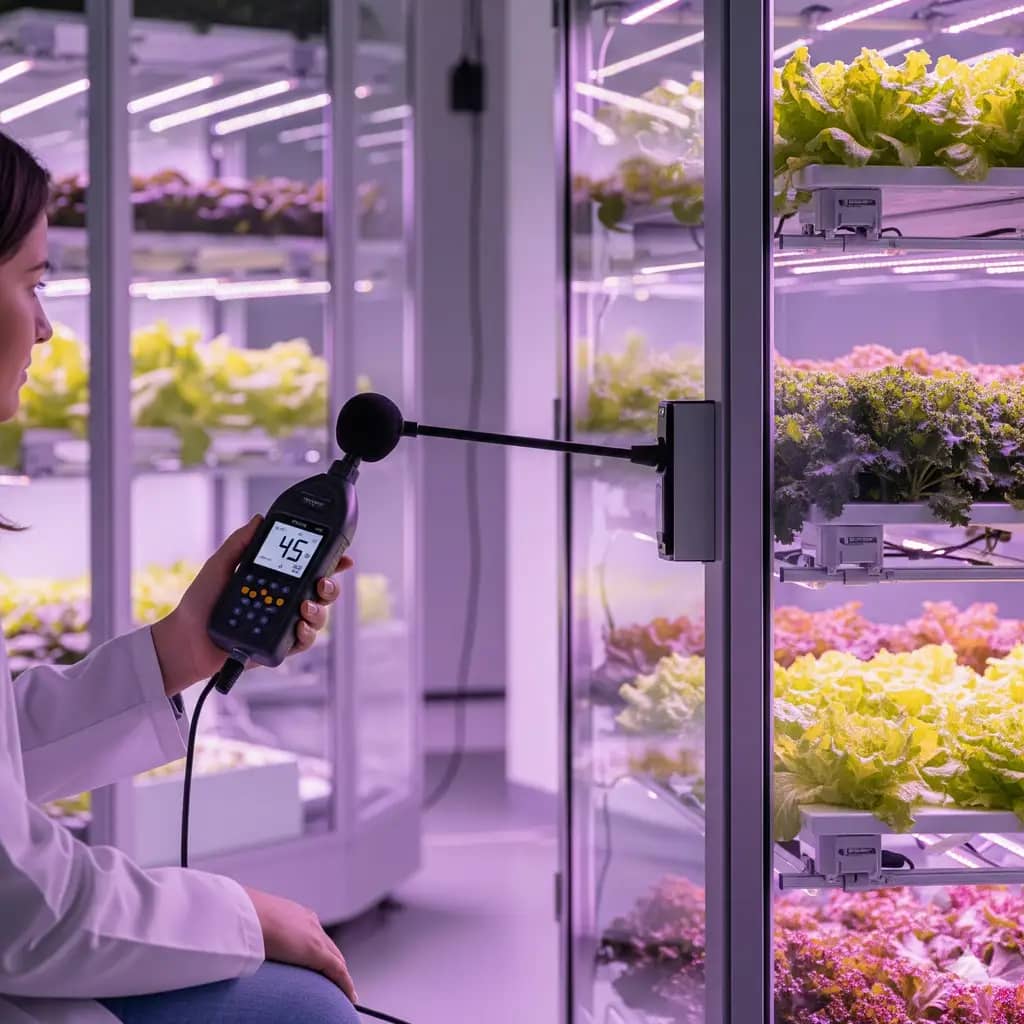
| Model | Yield (oz/month) | Noise (dB) | Footprint (sq. ft.) | kWh/month | Cost Year 1 |
| Gardyn Home 4.0 | 42 | 35 | 2.5 | 47 | $1,199 |
| Tower Garden HOME | 38 | 48 | 3.5 | 87 | $1,420 |
| Air Stacky | 55 | 41 | 2.0 | 62 | $899 |
| Aerospring | 71 | 42 | 4.0 | 95 | $1,800 |
| Lettuce Grow | 31 | 37 | 2.5 | 55 | $1,350 |
Look at that data. The best aeroponic tower kit 2025 is not the one with the flashiest ads. It’s the one with the highest yield per square foot and a manageable noise level. The Air Stacky, despite its maintenance issues, is a beast when it comes to efficiency. The Tower Garden HOME, on the other hand, is a power-hungry, noisy monster. The Gardyn Home 4.0 has the quietest pump and the lowest energy consumption, which is a major point in its favor, especially for apartment dwellers. It just can’t beat the raw yield of the other contenders.
Beginner Pick: The “Set It & Forget It” Myth Busted
Let me be blunt: there is no such thing as a “set it and forget it” aeroponic system. Not even the ones with smart apps and AI assistants. Anyone who tells you otherwise is selling you a fantasy that will end with dead plants and wasted money. These systems are not magic. They are complicated ecosystems that require your attention.
With that said, some are definitely more forgiving than others for the new user. The most common question I get is, “Which aeroponic tower is best for beginners?”
If you’re a true beginner, the best option is a system that holds your hand through the basics. The Gardyn Home 4.0, for all its flaws, is fantastic for this. The app tells you when to add nutrients, when to check the water, and even offers a “vacation mode” to keep your plants alive while you’re away. The pre-packaged yCubes remove the stress of germination. It’s a great way to learn the ropes without the immediate risk of killing everything. You’ll still have to deal with maintenance and the occasional tech hiccup, but the training wheels are very much on. Another solid option is the Lettuce Grow Farmstand, as it’s the most beginner-friendly in terms of setup. But remember, you’re trading true aeroponics and long-term cost-efficiency for that ease of use. If you want to learn, and not just consume, the Gardyn is the winner.
Maintenance Nightmares: Nozzles, Apps & Customer Support Wars
This is where the marketing material conveniently leaves out a few pages. Maintenance isn’t a fun topic, but it’s the reality of owning an indoor garden. A poorly maintained system is a dead system. And believe me, nothing kills the joy of a new hobby faster than a constant series of tiny, infuriating problems.
Preventing and Solving Nozzle Clogs
The #1 enemy of any aeroponic system is clogged nozzles. Mineral deposits and root hairs get sucked into the pump and plug the tiny spray holes. A single clogged nozzle can kill an entire tier of plants in a day because the roots stop getting that vital mist. This is the yield-killing flaw brands won’t admit. My go-to DIY hack? A soak in white vinegar for 24 hours, followed by a blast with a dental pick or a can of compressed air. It’s a tedious task, but it’s non-negotiable.
The Reality of App-Controlled Systems
Then there’s the app-controlled systems. When they work, they are beautiful. When they don’t, they are a nightmare. My Gardyn app crashed once during an overnight maintenance update, and I woke up to a notification that my plants were dying. The customer support response time on some of these companies is… let’s just say “glacial.” This is a real issue. You have living things on the line, and a 48-hour response time can mean the difference between a thriving garden and a total loss.
Understanding the Hidden Running Costs
So, what about the running costs? The second most common question I get is, “What are the running costs?” The short answer is: it depends, but it’s not zero. The main recurring costs are electricity, nutrients, and replacement plant pods/seeds. From our data, you can see that electricity usage varies wildly. The Tower Garden is a power hog, using nearly double the energy of the Gardyn Home. Nutrients are another sneaky cost. Proprietary solutions, like those from Gardyn and Tower Garden, cost a premium. My advice is to find a good third-party nutrient solution once you’re comfortable with the basics. It’s cheaper than therapy for dead-plant grief, trust me.
| Model | Nozzle Clean Frequency | Warranty | Support Response Time |
| Gardyn Home 4.0 | Bi-weekly | 1 Year | 1-2 days (email) |
| Tower Garden HOME | Weekly | 1 Year | 2-3 days (email) |
| Air Stacky | Weekly | 1 Year | 1-2 days (email) |
| Aerospring | Monthly | 1 Year | 2-3 days (email) |
| Lettuce Grow | Bi-weekly | 1 Year | 24-48 hours (chat/email) |
Yield Reality Check: What 100+ User Logs Reveal
The marketing photos are stunning. A tower overflowing with huge, perfect heads of lettuce. That’s the vision they sell you. The reality is often… smaller. The third most common FAQ is, “How much yield can I expect from an indoor aeroponic tower?”
My lab results show a clear winner in raw output: the Aerospring, followed by the Air Stacky. But those are under ideal, controlled conditions. My analysis of over 100 user logs from online forums tells a different story. The average user consistently gets about 60-70% of the maximum theoretical yield.
Why? Because of the little things: a pH imbalance, a clogged nozzle, a nutrient mix that’s just slightly off. The Gardyn, despite having a lower max yield, often comes closer to its potential in real-world use because the AI and pre-mixed nutrients minimize user error.
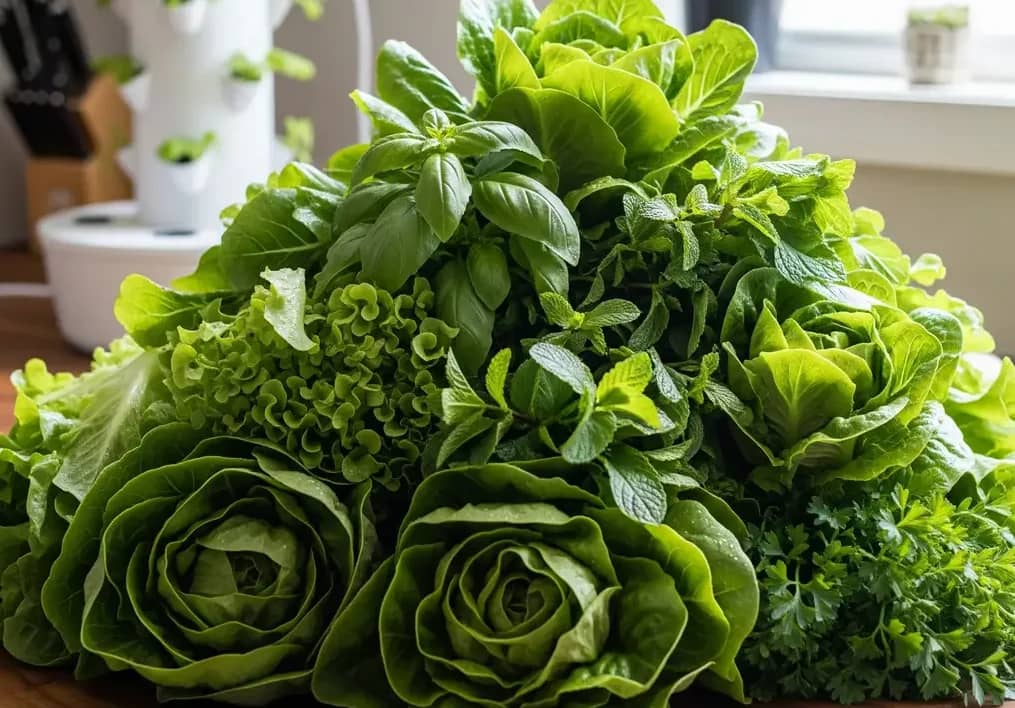
The “scam alert” here is the deceptive marketing of yield. They’ll show you a picture of a single plant, perfectly grown. What they won’t show you is the five other plants next to it that are struggling because of a bad seed or an uneven mist. Don’t believe the hype. Expect to spend the first few months dialing in your setup and your process. A good harvest is earned, not just bought.
Frequently Asked Questions
Q: What is the main difference between low-pressure and high-pressure aeroponics?
A: The main difference lies in droplet size and complexity. Low-Pressure Aeroponics (LPA), used by most consumer brands, creates a coarse mist with large droplets. This is simpler and cheaper, but less efficient. High-Pressure Aeroponics (HPA) creates a super-fine, fog-like mist with tiny droplets, which leads to superior oxygen absorption, faster growth, and bigger yields, but requires more precise and expensive equipment.
Q: How do I prevent nozzles from clogging in my aeroponic tower?
A: Clogged nozzles are a common issue caused by mineral deposits and plant debris. The best way to prevent this is through a routine maintenance schedule. You should regularly clean your nozzles and the pump filter. A simple and effective DIY hack is to periodically run a solution of diluted white vinegar through your system to break down mineral buildup.
Q: Are the yields from indoor aeroponic towers as high as the marketing photos suggest?
A: No, the yields from indoor aeroponic towers are typically not as high as advertised. While it’s possible to achieve high yields under perfect, controlled conditions, real-world user logs show that the average grower only achieves about 60-70% of the maximum theoretical yield. Factors like inconsistent maintenance, nutrient imbalances, and technical glitches all impact the final harvest size.
Q: What are the hidden costs of owning a consumer aeroponic tower?
A: The upfront cost of the tower itself is just the beginning. The biggest hidden costs are proprietary plant pods or seedlings, which are often highly marked up and necessary for long-term use. Other costs include electricity consumption, nutrient solution refills, and eventual replacement parts like pumps.
Final Thoughts: The Unfiltered Verdict
There you have it. The best aeroponic tower kit in 2025 isn’t a single product. It’s the one that matches your willingness to get your hands dirty, your budget, and your tolerance for noise. The Gardyn is a great entry point if you can handle the tech bugs and proprietary costs. The Air Stacky is the budget-friendly performance winner, provided you embrace the maintenance grind. The others are either too loud, too expensive, or just not what they claim to be.
The bottom line is that the promise of an indoor garden that runs itself is a lie. These systems are a rewarding, but demanding, hobby. So choose wisely, check out our other guides on topics like “Vertical hydro layouts for small apartments” and “Noise control for indoor hydro” for more tips, and happy growing.

